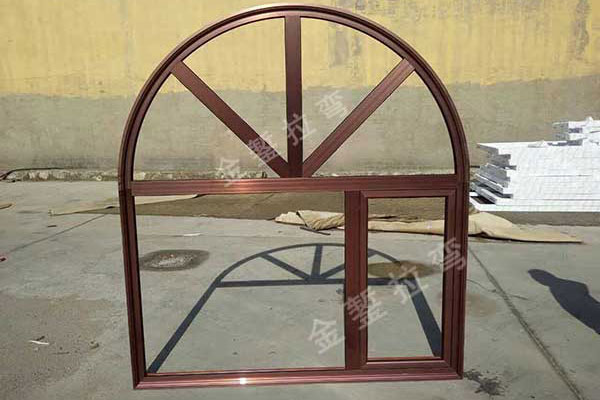Redefining the construction industry with innovative solutions, cuttin-edge technology and sustainable practices
Profile Bending 2025-08-07
Metal bending is a vital process in many industries, ranging from automotive manufacturing to construction and custom metal fabrication. While it is a crucial skill that contributes to the production of various components, it also presents unique safety challenges. Ensuring a secure work environment is paramount to protecting employees and maintaining operational efficiency. In this article, we will delve into best practices for metal bending safety, covering essential precautions, training, and equipment maintenance to create a culture of safety in the workplace.
1.Understanding the Risks
Before implementing safety measures, it is crucial to understand the inherent risks associated with metal bending. Common hazards include:
-Crushing Injuries: Metal bending machines can exert significant force, potentially causing injuries if operators or bystanders are caught in the machinery.
-Cuts and Lacerations: Sharp edges of metal sheets and parts can lead to cuts, especially when handling raw materials.
-Eye Injuries: Metal shavings, sparks, and other debris can pose risks to eye safety, making proper eye protection essential.
-Noise Exposure: Metal bending operations can generate high noise levels, which may lead to hearing loss if appropriate measures are not taken.
Recognizing these risks is the first step toward implementing effective safety practices.
2.Personal Protective Equipment (PPE)
One of the most critical components of a safe metal bending environment is the use of appropriate personal protective equipment (PPE). Employers should ensure that all workers are equipped with the following:
-Safety Glasses or Goggles: Protect eyes from flying debris and sparks.
-Cut-Resistant Gloves: These protect hands from cuts and lacerations while handling sharp metal pieces.
-Hearing Protection: Earplugs or earmuffs should be provided to safeguard against noise-induced hearing loss.
-Steel-Toed Boots: Footwear that protects against heavy objects falling or rolling onto feet.
-Long-Sleeve Shirts and Pants: To protect skin from cuts and burns.
Employers should conduct training sessions to emphasize the importance of wearing PPE and ensure compliance among all workers.
3.Training and Education
Proper training is essential for ensuring that workers understand the risks associated with metal bending and how to mitigate them. Key components of an effective training program include:
-Machine Operation Training: Employees should receive hands-on training on how to operate metal bending machines safely, including understanding emergency stop functions and machine controls.
-Hazard Recognition: Workers should be taught to identify potential hazards in their environment and understand how to avoid them.
-Emergency Procedures: Training should include clear guidelines on what to do in case of an accident or emergency, including first aid protocols and evacuation procedures.
-Regular Refresher Courses: To keep safety knowledge fresh, regular training sessions should be conducted to reinforce safe practices and introduce any new safety protocols or equipment.

4.Machine Maintenance and Safety Features
Regular maintenance of metal bending equipment is vital for ensuring safety and optimal performance. Employers should establish a routine maintenance schedule that includes:
-Inspection of Equipment: Regularly check machines for signs of wear, damage, or malfunction. Any defective machinery should be taken out of service immediately.
-Safety Features: Ensure that safety guards, emergency stops, and other safety features are functional and not bypassed. Regularly test these features to ensure they work as intended.
-Cleaning: Keep workspaces clean and free of clutter to minimize trip hazards and ensure easy access to emergency equipment.
5.Workplace Organization
A well-organized workplace contributes significantly to safety. Employers should implement practices that promote an orderly environment, such as:
-Clear Signage: Use clear signs to designate hazardous areas, remind workers of PPE requirements, and indicate emergency exits.
-Material Handling Procedures: Implement proper lifting techniques and use equipment such as dollies or hoists to move heavy materials safely.
-Designated Work Areas: Establish specific areas for metal bending, material storage, and equipment to reduce congestion and improve workflow.
6.Encouraging a Safety Culture
Creating a culture of safety in the workplace involves encouraging open communication and accountability among employees. Employers can foster this culture by:
-Encouraging Reporting: Create an environment where employees feel comfortable reporting safety concerns or near-miss incidents without fear of reprisal.
-Incentivizing Safety: Consider implementing safety reward programs that acknowledge and reward employees for adhering to safety protocols and contributing to a safe work environment.
-Regular Safety Meetings: Hold regular safety meetings to discuss concerns, share best practices, and ensure that safety remains a priority.
Metal bending is a critical process that, while essential to many industries, comes with inherent risks. By prioritizing safety through the use of appropriate personal protective equipment, comprehensive training, regular machine maintenance, and a commitment to workplace organization, employers can create a secure environment for their workers. Moreover, fostering a culture of safety encourages proactive engagement from employees, ensuring that safety protocols are followed andeveryone remains vigilant. This collective approach not only minimizes the risk of accidents but also enhances overall productivity and morale within the workplace.